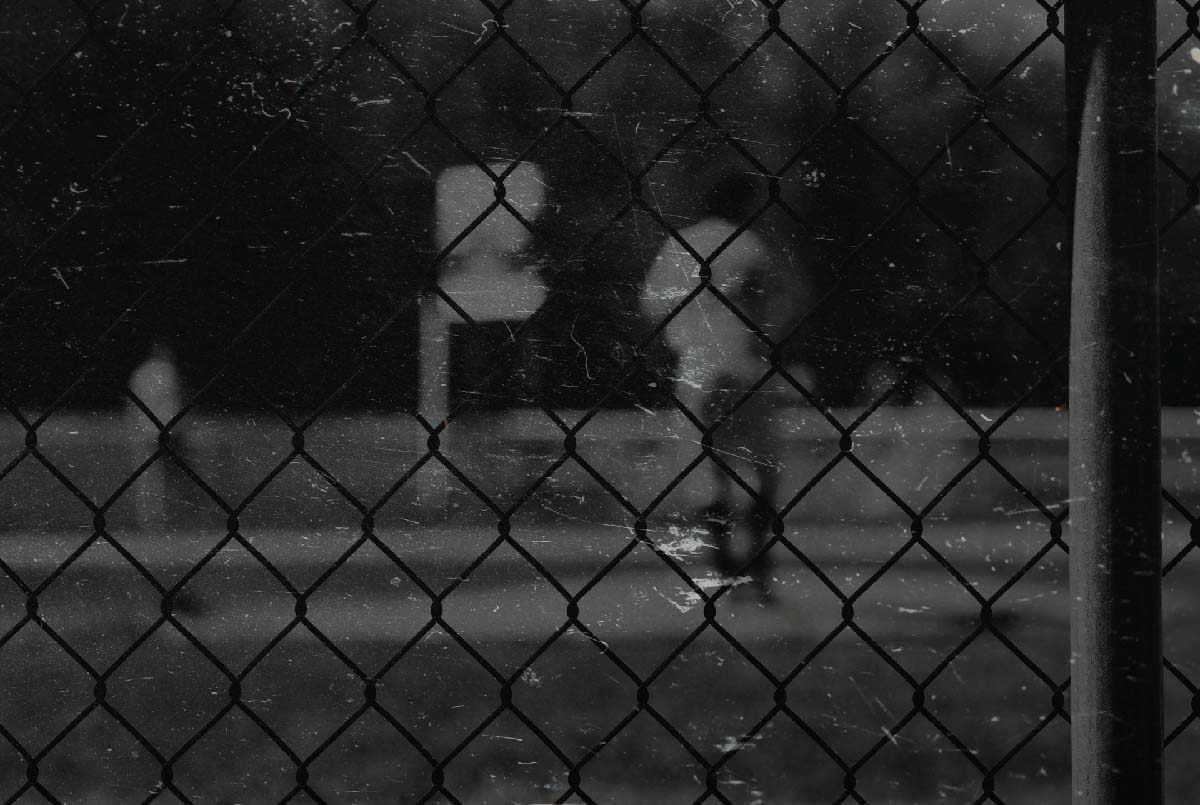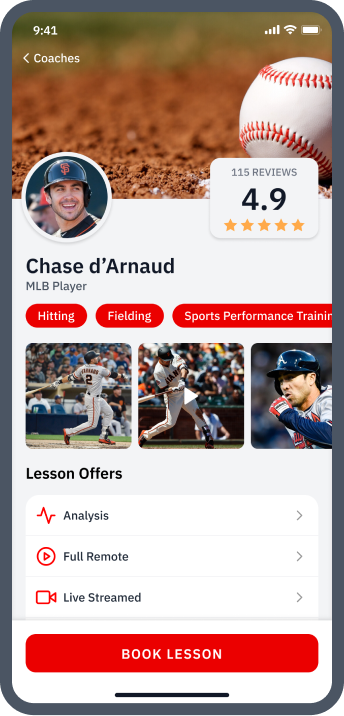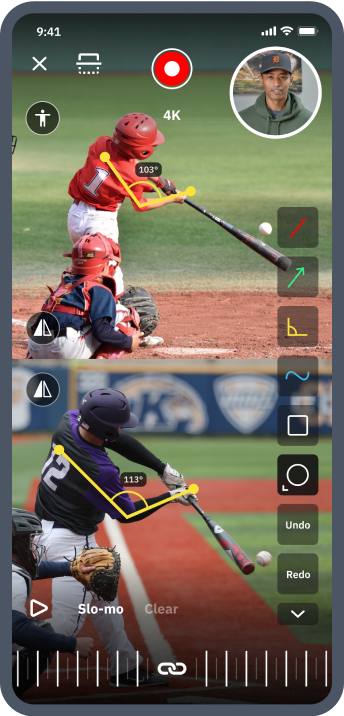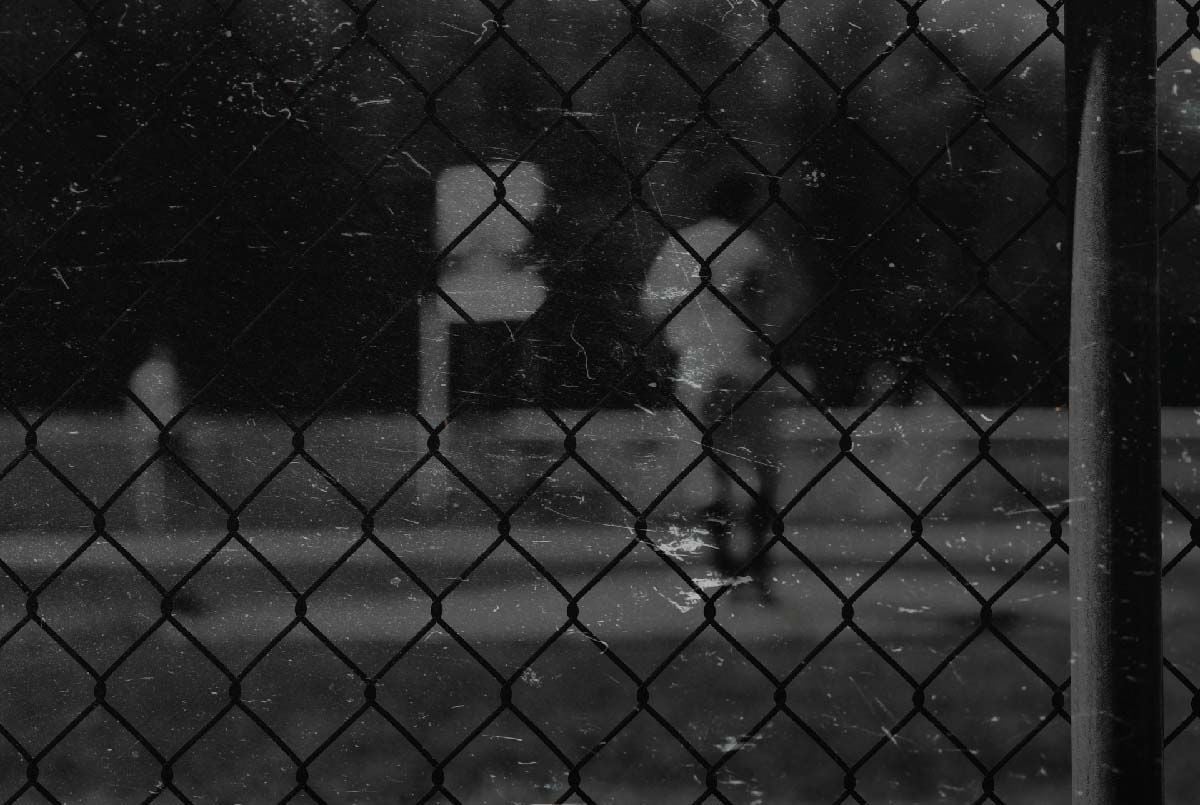How Much Does Reaction Time Affect Baseball Performance?

You’ve probably heard that to be a pro baseball player, you need lightning-fast reaction times.
Studies into sensorimotor skills, in baseball and other sports, have shed light on the relationship between reaction time and elite athlete performance.
This research shows that both visual skills and motor skills together impact athletes’ success.
We are here to attempt answer all of the following for both coaches and budding ballplayers:
- What exactly does it mean to have a quick reaction time in baseball?
- How are some players able to react faster than others?
- Just how much do these skills matter in our game?
- What implications do studies of reaction time have on how to go about athletic training?
Let’s hook-hand-slide into it all, shall we?

The Role of Vision in Sports
For many elite competitors, vision plays a key role in their success.
Researchers have studied athletes in other sports, like basketball, soccer, motorsports, and cricket, and found that experts in these sports have better visual acuity and contrast sensitivity than non-experts.
Studies have also shown that vision is a complex sense and many factors are at play for high-level athletes who rely on vision to succeed.
But before moving forward, we’re gonna need some definitions – that way, we’re all on the same page.
Elements of vision that matter in sports are:
- Visual attention and peripheral vision: The eyes’ field of focus – called the visual field – is actually rather small. We can only fixate our attention on fine details with both eyes in a narrow visual field.
But you can still “see” things in your peripheral vision – they’re just out of focus. Peripheral vision is most important in sports with quick movements, such as basketball. - Eye dominance: Just as you’re right-handed or left-handed, you’re also right-eyed or left-eyed. Your dominant eye processes information and sends it to your brain more quickly than your non-dominant eye.
For baseball hitters, knowing which eye is dominant might influence how you position your head during your stance to get the best view of the incoming pitch. - Eye movements: This refers to the speed with which your eyes can track what’s in your field of vision
These eye movements – occurring either as you’re moving, as the game’s object is moving, or both – are also integral to visual success in sports. - Visual acuity: Visual acuity refers to accuracy – or how much detail you can discern from certain distances.
Greater accuracy leads to more success for elite athletes. - Contrast sensitivity: Contrast sensitivity is an accuracy measurement that gauges the ability to process visual information under varying lighting conditions.
As an object’s velocity increases, your contrast sensitivity is likely to decrease.
Batters with better contrast sensitivity functioning have an easier time picking up the ball visually as the pitch comes hurling in.
Now, remember, it’s visual skill working together with sensorimotor skills that give elite athletes their edge.
So, with the necessary visual definitions out of the way, let’s do the same for sensorimotor terms.

What Are Sensorimotor Reactions?
Your sensorimotor skills allow you to receive messages – known as inputs – through your senses and produce a motor response – AKA, output.
First, you have your three main sensory skills types:
- The five senses: hearing, touch, smell, taste, and sight
- Vestibular: inner ear – your head position helps control balance
- Proprioception: your body’s ability to perceive its own position within space
Then, you have your motor skills, which are related to our muscles and movements.
These two sets of skills – sensory and motor – work together, of course, to form your sensorimotor abilities.

What are some examples of sensorimotor skills being used in baseball?
- Body in space: At a young age, you learn how to recognize where you are in relation to other people and objects.
This ability facilitates your visual motor skills, which are critical to reaction times for athletes in so-called “striking sports” such as baseball and cricket. - Laterality: The long-term deployment of specific motor patterns grooved by the preferential use of one side or part of the body over the other. It’s more than if you’re a righty or lefty though. Eye movements must also develop this laterality.
And this sensorimotor skill comes into play with everything from hitting to pitching to chasing down a flyball. - Balance: You learn how to balance thanks to your vestibular system, in the inner ear.
Balance keeps you from falling down, and greater balance creates more neural networks which develop your input-output communication systems further and further. We all know how important good balance is for both hitting and pitching. - Centering: Centering allows you to cross your midline from top to bottom, letting your body move as one rather than a bunch of different parts.
Any hitting coach knows that getting their body to work in unison throughout a swing is a major challenge for many budding ballplayers.

Motor and Visual Skills in Baseball Hitting vs. Pitching
Although visual skills and motor skills often work together in most successful athletes, it’s important to note that some tasks require more of one or the other.
A good example is the difference between pitching and hitting.
A pitcher must manipulate the ball with fine motor movements and coordinate a full-body sequence in order to deliver the pitch, but they actually rely less on their visual senses relative to hitters.
Alternatively, a batter must possess well-cultivated motor skills to execute the correct movement patterning on the correct swing plane, paired simultaneously with extraordinary visual tracking skills to actually square up a pitched ball.
Hence, the claim that hitting a baseball is the hardest thing to do in sports – it’s a complete duet of both visual and motor skills.

Visual Hardware vs. Visual Software in Ballplayers
To dig deeper into reaction time in baseball batters, researchers have focused particularly on either the body in space component or visual-motor skills.
They have long-known that high-level athletes possess heightened visual-motor skills.
But what interests researchers more, in baseball and across all sports, is whether athletes have inherently better visual systems physiologically or if their perceptual abilities can be shaped through practice and training.
Some researchers refer to the innate physiological advantage as “visual hardware” and the training-made advantage as “visual software.”
It’s basically just the nature versus nurture debate. And there’s evidence to support both sides.
So the debate over the dominance of visual hardware or visual software in expert athletic performance is ongoing.

How Does Player Reaction Time Affect Baseball Performance Stats?
A group of researchers wanted to dive deeper into the visual hardware vs. visual software debate.
To do so, they evaluated the links between sensorimotor skills and on-field performance of 252 professional baseball players, by comparing data from sensorimotor skills assessments run by Nike in 2012-2013.
They found that sensorimotor skills are reliable predictors for the following baseball statistics:
- On-base percentage
- Walk rate
- Strikeout rate
The researchers also looked at slugging percentage and fielder-independent pitching but didn’t find the same relationship with sensorimotor skills for these two stats.

The researchers concluded that sensorimotor abilities don’t affect slugging percentage because it’s primarily based on hitting for power and, quoting them, has “more to do with strength, bat speed, and swing plane than sensorimotor abilities.”
And we’ve already touched on how little reaction time affects pitchers when compared to batters – the FIP findings shouldn’t surprise you.
However, on-base percentage, walk rate, and strikeout rate have high predictability based on the level of sensorimotor skills that a hitter possesses, which cannot be breezed over.
These stats are massively important to the plate success of an individual ballplayer and, possibly even more obviously, when compounded into an entire team’s overall success.
Thus, this study and others like it have rightfully perked the interest of professional coaches and scouts looking for ways to help their organization win.

What Are the Implications of Studying Visual-Sensory and Visual-Motor Abilities in Ballplayers?
The authors of this same Nike-enabled study also note the implications it may have on professional baseball recruiting.
And this type of predictive data is vital to professional organizations.
One of the most interesting conclusions put forth by this Nike study is in regards to the nature versus nurture (hardware v. software) vision debate:
Overall, the current results suggest performance contributions from aspects of both receptive vision that constitutes visual hardware (Contrast Sensitivity and Depth Perception) and visual software that enables the processing of this information (Target Capture, Near-Far Quickness, Perception Span, Eye-Hand Coordination, Reaction Time). While on balance it appears that tasks measuring visual software are more predictive of on-field performance in professional baseball...Nonetheless, the current findings provide novel evidence of the importance of these abilities towards on-field achievement.
This conclusion is great news for baseball players, coaches, and parents. It reaffirms that hard work can be more important than natural, unearned talent for hitters.
Your very next thought is probably “How do ballplayers best train their visual and reaction skills?”
Luckily, we’ve written an ultimate guide all about such visual training programs for ballplayers, including how they work, along with practical techniques to incorporate into your overall training regime.
But, for now, this study and others show that reaction time is tied to successful performance in sports – especially baseball.
By breaking down reaction time and studying sensorimotor capabilities in high-level athletes, researchers continue to shape the nature of vision training programs for budding athletes.
Wanna grow your baseball or softball coaching brand?
Get connected to new local and online lesson clients—along with all the tools you need to scale.
Download the free app

About the Author
Dr. Edgar Rodriguez DC, CCSP.
Founder of EROD Sports Medicine & Training
Doctor Edgar Rodriguez DC, CCSP, is recognized as a leader in both sports chiropractic and performance fields. He's currently an adjunct professor at the University of La Verne.

